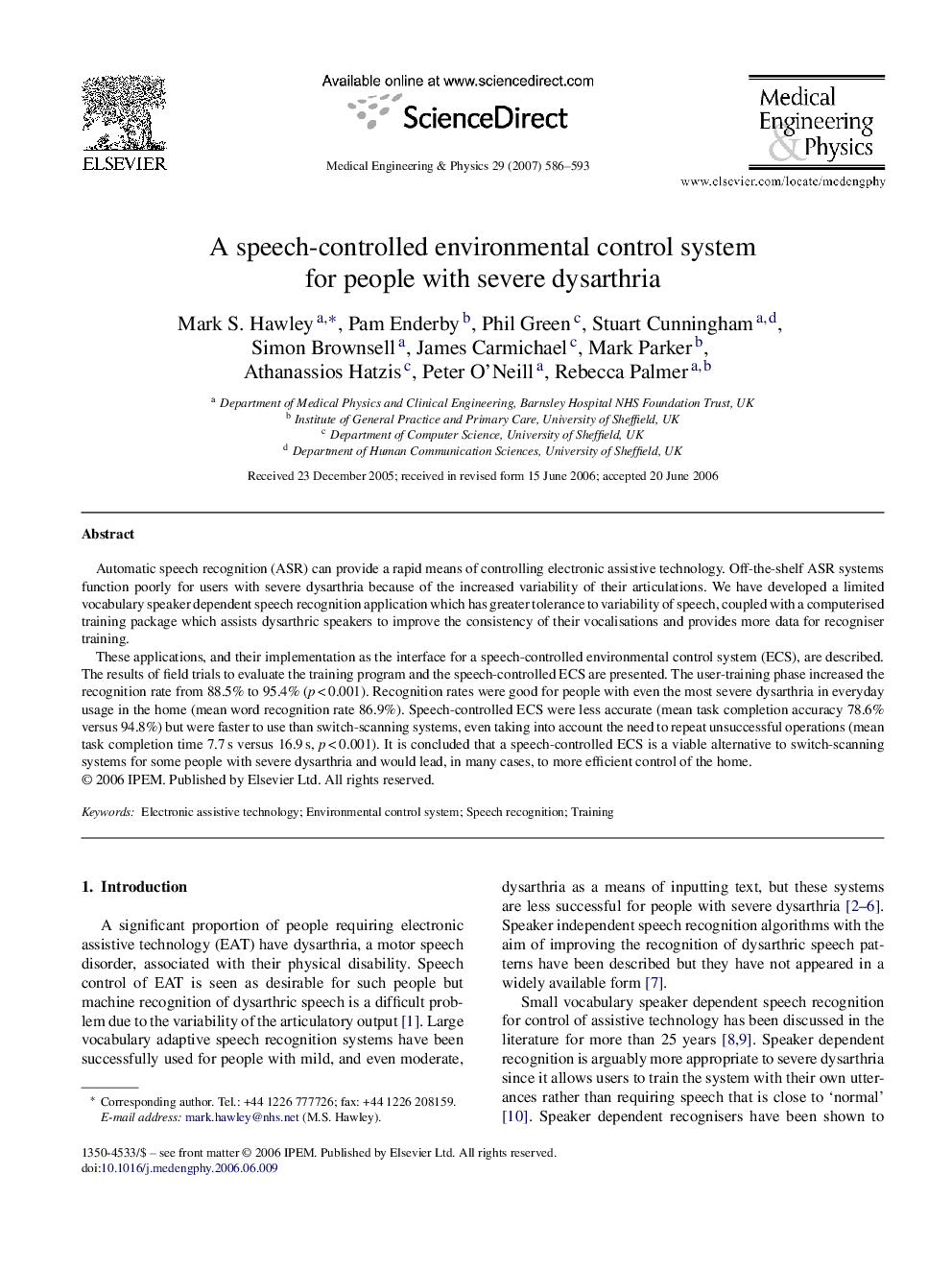| Article ID | Journal | Published Year | Pages | File Type |
|---|---|---|---|---|
| 877205 | Medical Engineering & Physics | 2007 | 8 Pages |
Automatic speech recognition (ASR) can provide a rapid means of controlling electronic assistive technology. Off-the-shelf ASR systems function poorly for users with severe dysarthria because of the increased variability of their articulations. We have developed a limited vocabulary speaker dependent speech recognition application which has greater tolerance to variability of speech, coupled with a computerised training package which assists dysarthric speakers to improve the consistency of their vocalisations and provides more data for recogniser training.These applications, and their implementation as the interface for a speech-controlled environmental control system (ECS), are described. The results of field trials to evaluate the training program and the speech-controlled ECS are presented. The user-training phase increased the recognition rate from 88.5% to 95.4% (p < 0.001). Recognition rates were good for people with even the most severe dysarthria in everyday usage in the home (mean word recognition rate 86.9%). Speech-controlled ECS were less accurate (mean task completion accuracy 78.6% versus 94.8%) but were faster to use than switch-scanning systems, even taking into account the need to repeat unsuccessful operations (mean task completion time 7.7 s versus 16.9 s, p < 0.001). It is concluded that a speech-controlled ECS is a viable alternative to switch-scanning systems for some people with severe dysarthria and would lead, in many cases, to more efficient control of the home.
